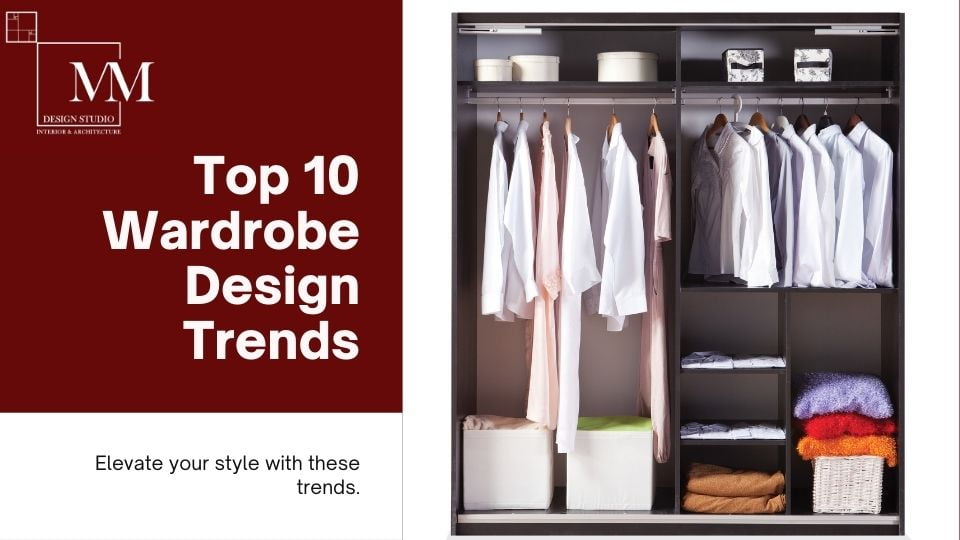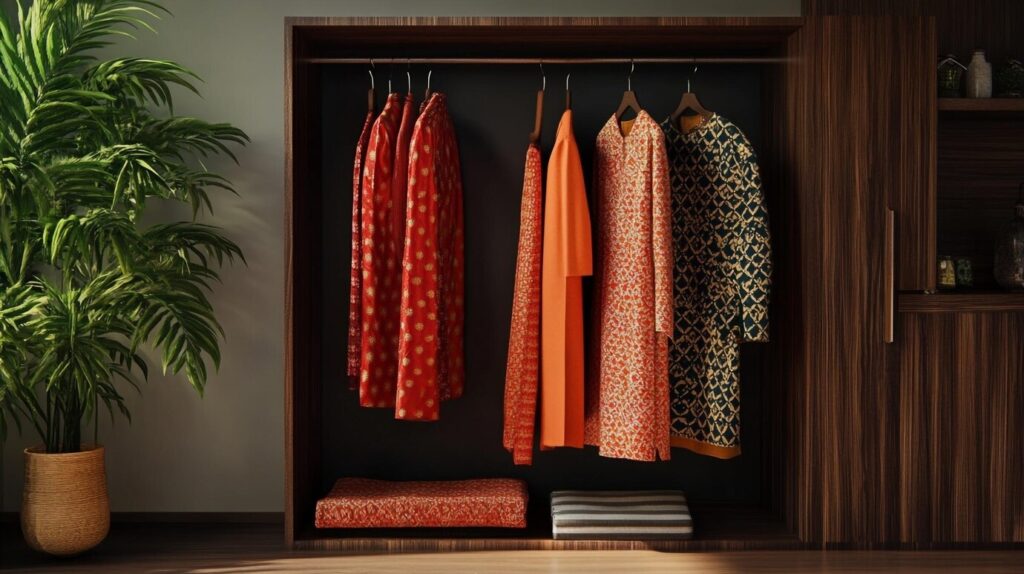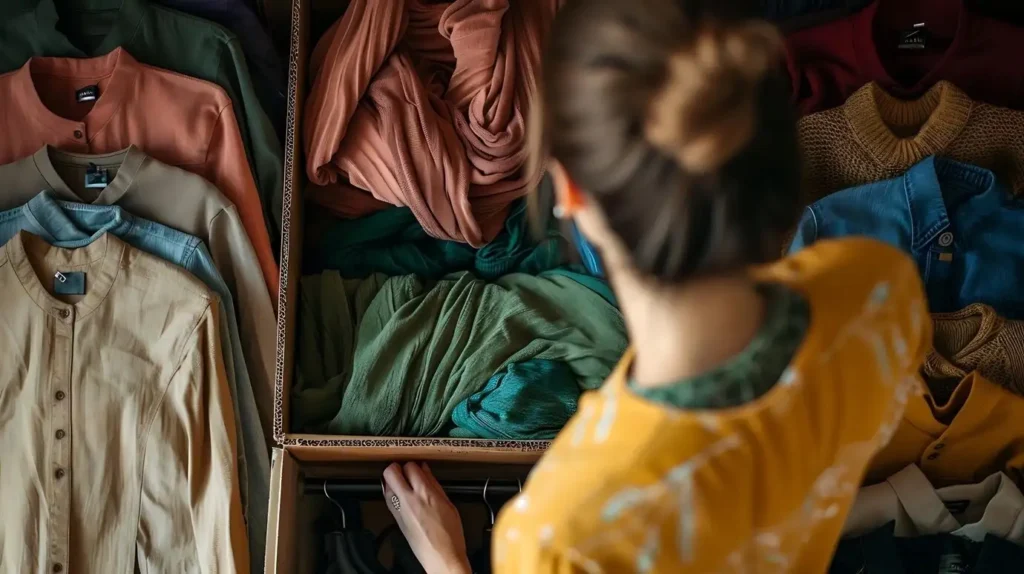10 Modern Wardrobe Design Trends for a Sustainable and Stylish Home

The modern wardrobes do not only present personal choices but also growing awareness of comfort and sustainability as part of today’s fast-changing culture. The newest clothing designs revolve around simplicity with lines that are clean and subdued colors. This minimalist design ensures that everything is done for a purpose, removes clutter from the room, and looks good. Eco-friendly textiles and natural components can now be used in garment designs for a beautiful, sustainable space. If you carefully think through all these above requirements, you may create a wardrobe that characterizes your look as well as of the latest comfort and sustainability standards.
Trends to Explore Now
With the increasing awareness of the environment by the clients, many fashion designers are designing outfits that are eco-friendly. The latest trend has been the use of eco-friendly materials, including recycled metal, bamboo, and reclaimed wood. These types of materials create unique designs for eco-conscience clients.
Plants in closets are also now chic. Plants, potted plants, and vertical gardens purify indoor air and create a soothing mood. Biophilic design, or the incorporation of nature into indoor spaces, gives rise to designs that allow better exposure to nature and lead to wellness, hence informative wardrobe layouts.
Other fashionable wardrobes include the open wardrobe and walk-in dressing room. The former reveals clothes, shoes, and accessories instead of concealing them, thus making it form a fashionable design for the room.
Do’s of Wardrobe Design
There are some great clothing design ideas to consider:
Prioritize Space
Prioritizing Space Closet design indeed calls for considerations of the efficiency of space. This is the epitome of organizing and storing things so that it can actually make even the most minuscule area seem spacious. Consider installing custom shelves, hanging racks, and drawer systems in order to maximize every inch of space. Thus, careful planning would help you find and manage your clothing and accessories efficiently, especially when your closet is organized.
Utilize Natural Light
Using natural illumination will change your closet mood. Mirrors and other reflective materials may make a room brighter and wider. Placing your wardrobe near windows and colorful walls and furnishings shall make it cozier and lighter. Brightening makes someone see better, which is very convenient while selecting clothing.
Incorporate Plants
As mentioned earlier, plants add aesthetic appeal and purify the air. For a quick solution for indoors, opt for pot plants like pothos or snake plants. If you want it to last longer, you can include artificial greenery. The addition of plants to a room may also help make it seem cozier and improve the quality of indoor air, and even your clothes themselves.
Choose Versatile Designs

Select adjustable goods with changing needs or interests. Tactical agility here will save costs and waste. Multi-functional furniture, height-adjustable racks, and modular shelf solutions allow you to adapt your wardrobe design for changing tastes or storage requirements without starting from scratch.
Focus on Functionality
The design has to be a fusion of functionality and beauty. Seasonal storage can be in the form of changing summer and winter clothes or buying ottomans with storage. Maintaining form and function in harmony will ensure that your clothes both happen to be fashionable and practical.
Don’ts of Wardrobe Design
Your wardrobe design should include certain essentials, but there are certain mistakes you must avoid:
Overcrowding
A full closet is cluttered and makes it difficult to find anything. Keep it very simple by using only a few important elements that include ample movement. Overcrowding reduces the usability of an area and its aesthetic. Hanging organizers and drawer dividers may help you organize your clothes.
Inconsistent Themes
A wardrobe that does not strongly look different from the room’s design theme can make sense for the room to be noisy. Ensure there is consistency in color, material, and style to maintain a cohesiveness of the design. A matched clothing style with décor can support the overall appearance while not making changeover very difficult. Elements related to a theme include things like color accents or textures that keep the design all cohesive.
Using Poor-Quality Materials

Poor materials reduce durability and sustainability. Inferior products may degenerate, leading to litter, hence not friendly to the environment. Use durable, good-quality materials for minimal replacements. This is to the advantage of the environment and is more graceful.
Ignoring Special Needs
Design should be based on people’s tastes and needs. In choosing an outfit, consider height, accessibility, and preference. Through alteration of the design, you can make your clothes comfortable, useful, and perfectly appropriate for your lifestyle.
Neglecting To Plan
Without a plan, the design may be hazy and disappointing. Begin by outlining your ideas and then measuring how the space will be used. A planned approach makes sure the end result will meet functional needs and avoid costly mistakes.
How Do I Choose a Wardrobe Design?
In designing a wardrobe, take into account the following key considerations:
Assess Your Space
Measure the wardrobe space in height and breadth. Calculate how your room is laid out and where the wardrobe will go. The exact proportions have the wardrobe fit perfectly and fill the room with beauty and functionality.
Understand Your Needs
Determine your clothing storage requirements. Ensure that the design accommodates sufficient spaces to hold all your significant collection of shoes, accessories, and other belongings. Changing your wardrobe based on your storage needs facilitates easy access, cleanliness, and arrangement.
Identify Style Preferences
Be sure to look for your faves in Bohemian, Scandinavian, or Minimalist styles. Consider how flora and materials may easily be included in these styles to make a space feel natural. You’ll have a better and more cohesive space with a design that’s aesthetically pleasing to you and matching the ones you have.
Budget Considerations
Set a budget early on to help you choose brands, materials, and styles. A fair budget can keep you from overspending and can lead to better judgments. It allows you to look for quality solutions within your budget range and prioritize specific features.
Seek Inspiration
Get inspired. Design magazines, social media, and stores may inspire you. Using visual references in establishing your style may assist in making design decisions fitting your needs.
How MM Design Studio Will Help You in This
How the MM Design Studio Can Help: We specialize in sustainable, beautiful clothing designs at our MM Design Studio. The professional team at our studio tailors a plan to each customer’s needs, preferences, and space.
MM Design Studio, in its rich palette of sustainable materials and unique design solutions, can help our clients do more without negatively impacting the environment. Whether it is assistance in utilizing sustainable materials, optimizing space, or integrating plants into your design, MM Design Studio is here to help.
Conclusion
Modern wardrobe designs can ensure pleasant and functional home furnishing. Because trends such as sustainability and plant-based life are developing, making a wardrobe that supports your values and beautifies your home is becoming more vital by the day. Apply these trends and best practices to create a well-befitting wardrobe that also addresses basic needs while making you more creative and aware.
FAQs:
Plants purify the air indoors and create a sense of nature. The incorporation of plants helps in creating an atmosphere by diminishing stress, thereby creating a healthy emotional environment.
You must focus on reclaimed wood, bamboo, recycled metals, and low-VOC finishes. These are nontoxic and, therefore, friendlier to the environment, contributing toward a healthier indoor environment.
Plan for minimalist fashion and curate a few essentials while regularly culling through what you have to determine what can be donated or sold. A tidy space will also prevent clutter.
